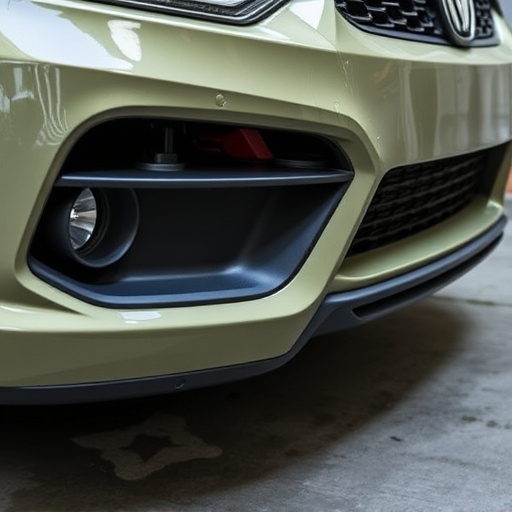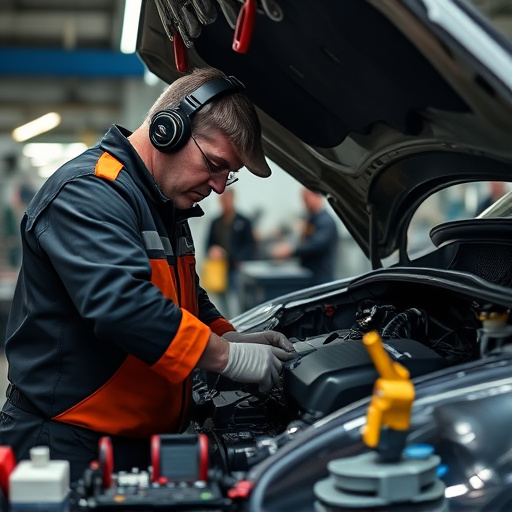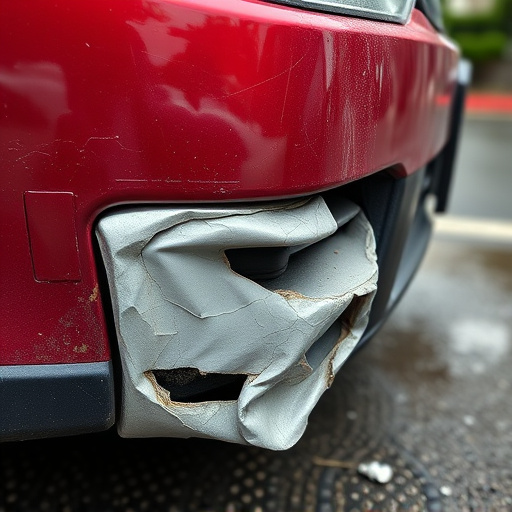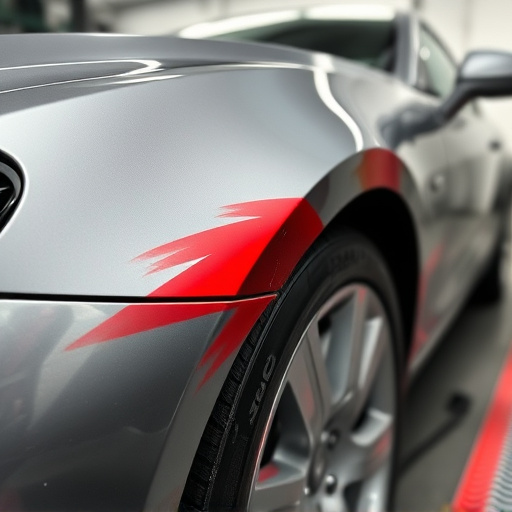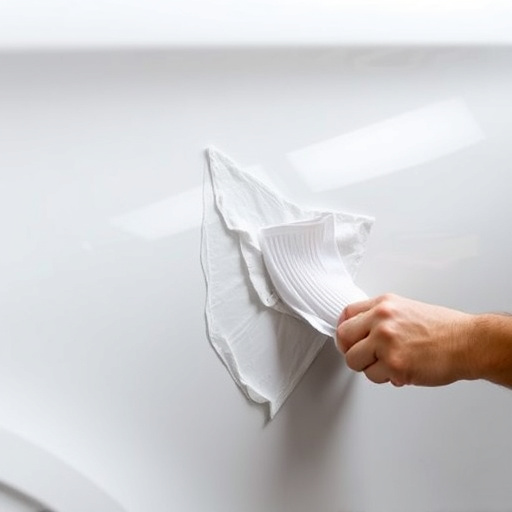Unusual exhaust aromas or performance changes after a collision may signal catalytic converter damage, requiring prompt inspection. Visually check for cracks or rust spots; consult specialized collision repair services for proper restoration of safety standards and optimal vehicle performance, focusing on exhaust system collision repair.
After a collision, your vehicle’s exhaust system could hold secrets. Uncommon odors wafting from the tailpipe or visible leaks in the exhaust system may signal damage to the catalytic converter—a vital component responsible for cleaning emissions. This guide explores key signs of converter damage, including unusual aromas and performance issues like lost power and efficiency, helping you navigate necessary repairs with confidence. Learn how a thorough inspection can reveal potential problems and guide effective collision repair strategies for your vehicle’s exhaust system.
- Recognize Odors: Uncommon Exhaust Aroma after Collision
- Visual Inspection: Check for Leaks in Exhaust System Damage
- Performance Issues: Loss of Power and Efficiency Indicate Converter Problems
Recognize Odors: Uncommon Exhaust Aroma after Collision

After a collision, one of the subtler signs of catalytic converter damage might be an unusual exhaust aroma. While a slight smell of ozone or burnt rubber is normal after a crash, any new, pungent, or entirely unfamiliar scent emerging from your vehicle’s tailpipe warrants attention. This is especially true if you notice it soon after the incident, as it could indicate that something has been compromised within your exhaust system.
If you’re certain it’s not related to other collision-related issues like oil leaks or burnt rubber from frayed brakes, an altered exhaust note or a sudden lack of performance could also point towards a catalytic converter problem. Don’t overlook these subtle cues; they might save you from costly vehicle collision repair down the line. Promptly addressing catalytic converter damage is crucial for maintaining your vehicle’s efficiency and ensuring it passes emissions tests—essential aspects of any auto body shop, especially one specializing in Mercedes Benz collision repair.
Visual Inspection: Check for Leaks in Exhaust System Damage

When assessing a vehicle for damage following a collision, one of the critical areas to inspect is the exhaust system. A visual examination can often reveal signs of catalytic converter issues that may have occurred during the impact. Look for any visible cracks or ruptures in the pipes, as these could indicate structural compromise and potential leaks.
In many cases, a damaged catalytic converter might not show significant external signs, but internal issues can still lead to exhaust system leaks. Check for any anomalies in the system, such as rust spots or discolored areas around the converter, which could suggest fluid leakage. If there are visible cracks or damage to the exhaust system components, it’s advisable to consult a collision center specializing in Mercedes Benz repair or similar luxury car brands, depending on your vehicle’s make, to ensure proper collision repair and restoration of optimal vehicle performance and safety standards.
Performance Issues: Loss of Power and Efficiency Indicate Converter Problems

After a collision, one of the most concerning issues to look out for is performance problems with your vehicle’s exhaust system, particularly the catalytic converter. This vital component plays a crucial role in reducing harmful emissions from your car’s engine. If it’s damaged during a collision, you’ll likely notice a significant drop in power and overall efficiency. A converter that’s functioning correctly helps burn off unburned fuel, ensuring smooth operation and minimizing pollutants. However, when it’s compromised due to an accident, this process can be hindered.
When the catalytic converter is damaged, your car might struggle to maintain optimal performance. You may experience a loss of power during acceleration or even a reduction in overall engine speed. Additionally, fuel efficiency could decrease noticeably, as the converter’s ability to facilitate efficient combustion is compromised. These issues are not merely cosmetic; they signal a deeper problem that requires professional attention, especially when it comes to exhaust system collision repair and car dent removal to ensure your vehicle returns to its pre-accident condition.
In the event of a collision, paying close attention to your vehicle’s exhaust system is crucial for identifying potential catalytic converter damage. This compact component plays a vital role in reducing harmful emissions and maintaining engine efficiency. Through recognizing unusual odors, conducting a visual inspection for leaks or damage, and observing any performance issues like power loss, you can effectively navigate the process of collision repair. Prompt action ensures not only safety but also preserves your vehicle’s environmental and operational integrity, making informed decisions about exhaust system collision repair paramount.



